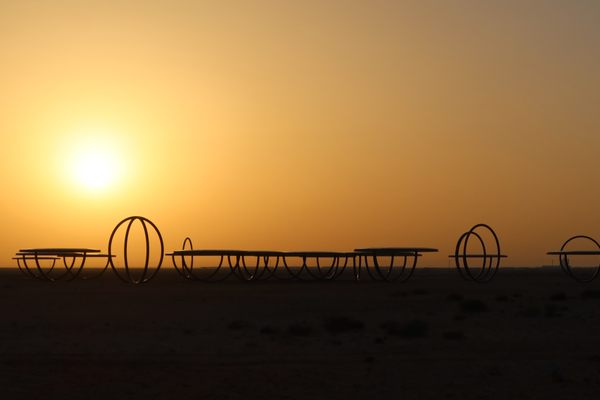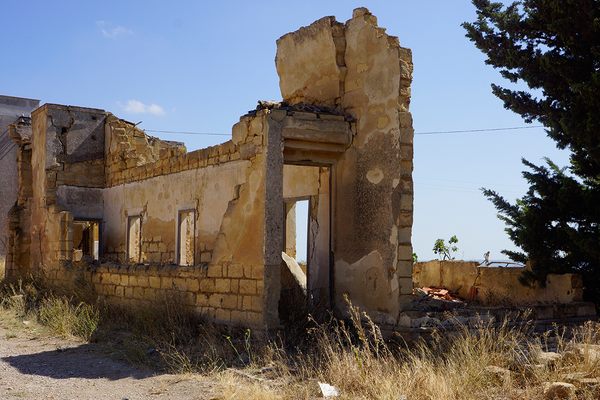Though its name (which comes from the Arabic word for “palm trees”) conjures images of an idyllic spot sheltered by the leafy fronds of date palms, this abandoned village is far from a verdant oasis.
Abandoned villages once inhabited by fisherman and pearl drivers speckle the coast of northern Qatar. They’re usually small, at times boasting no more than five or six houses. Al `Arish (sometimes spelled Al-Areesh) is one of the largest, with approximately 40 buildings in all.
Very few of the village’s structures have survived the test of time, and those that have bear the brunt of the unforgiving desert weather. A casual stroll through the village ruins reveals locally sourced pieces of coral rock and limestone held together by mud mortar to make thick walls built to protect against heat and windstorms. Some buildings are still capped by roofs made of closely knitted mangrove branches stacked atop bamboo poles, all slathered in another layer of mud mortar.
The minaret is the best preserved remain. Though badly cracked, it still stands tall among the rubble of the surrounding buildings. Its spiralling staircase still exists, making a winding climb to the top possible though definitely not advisable. The clearly identifiable remains of the demolished walls of the mosque, the room for ablutions, and the outer wall of the mosque yard are scattered around its base.
It seems that Al `Arish and its kindred villages were alive and well up to the 1970s, when the first oil reservoir was found under Qatari soil. This discovery revolutionized the economy that sustained people in Qatar for centuries. As people no longer had to face the daily hardship of fishing and diving, proximity to the sea became irrelevant. The coastal villages were abandoned, forgotten, and left to face the desert’s fury.























Follow us on Twitter to get the latest on the world's hidden wonders.
Like us on Facebook to get the latest on the world's hidden wonders.
Follow us on Twitter Like us on Facebook